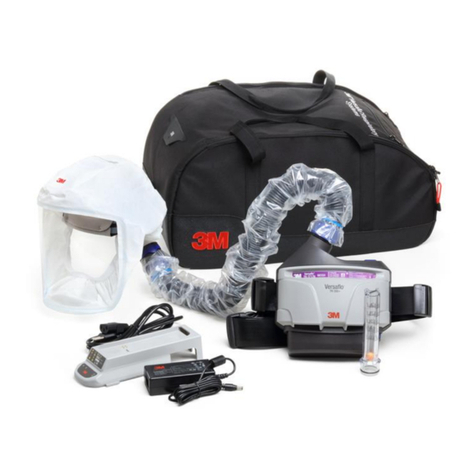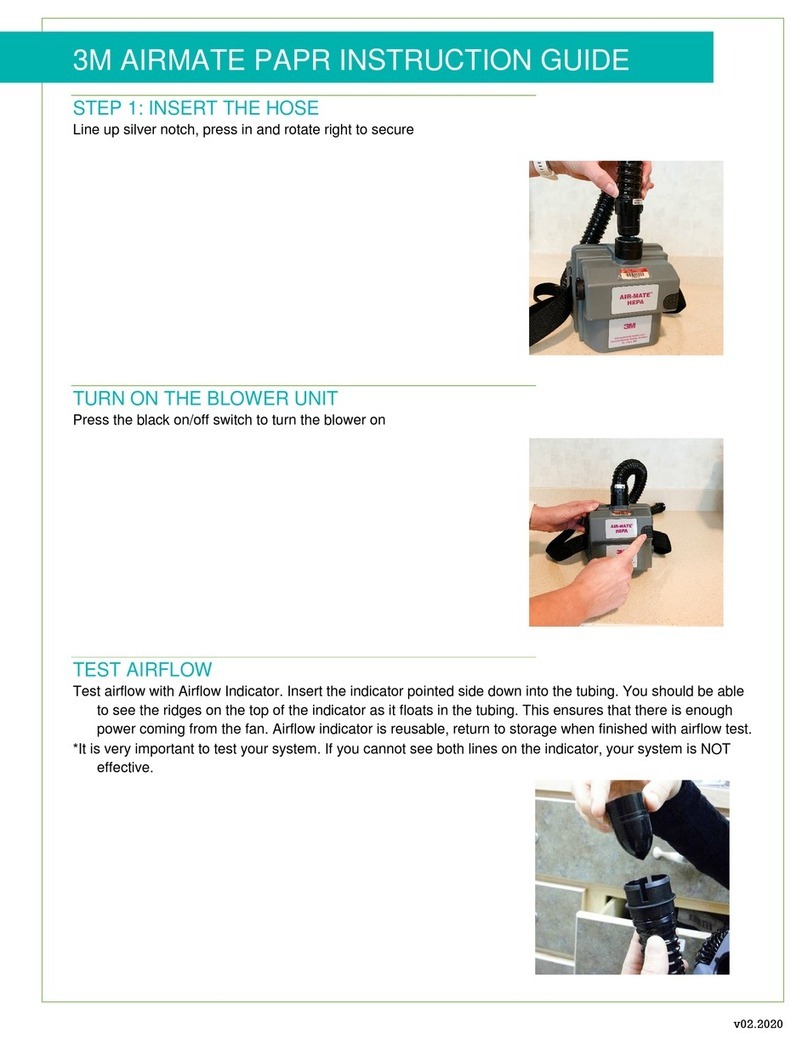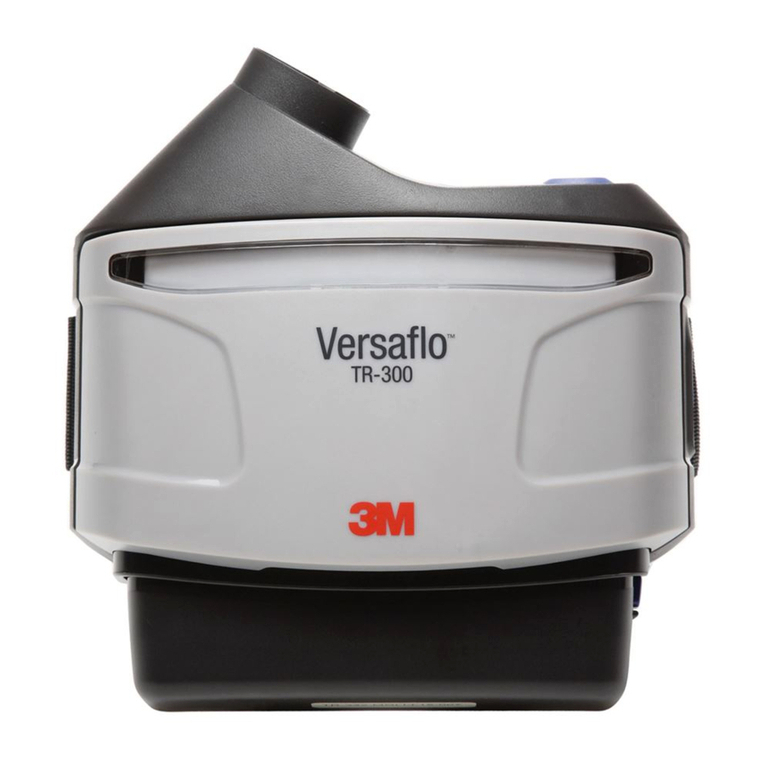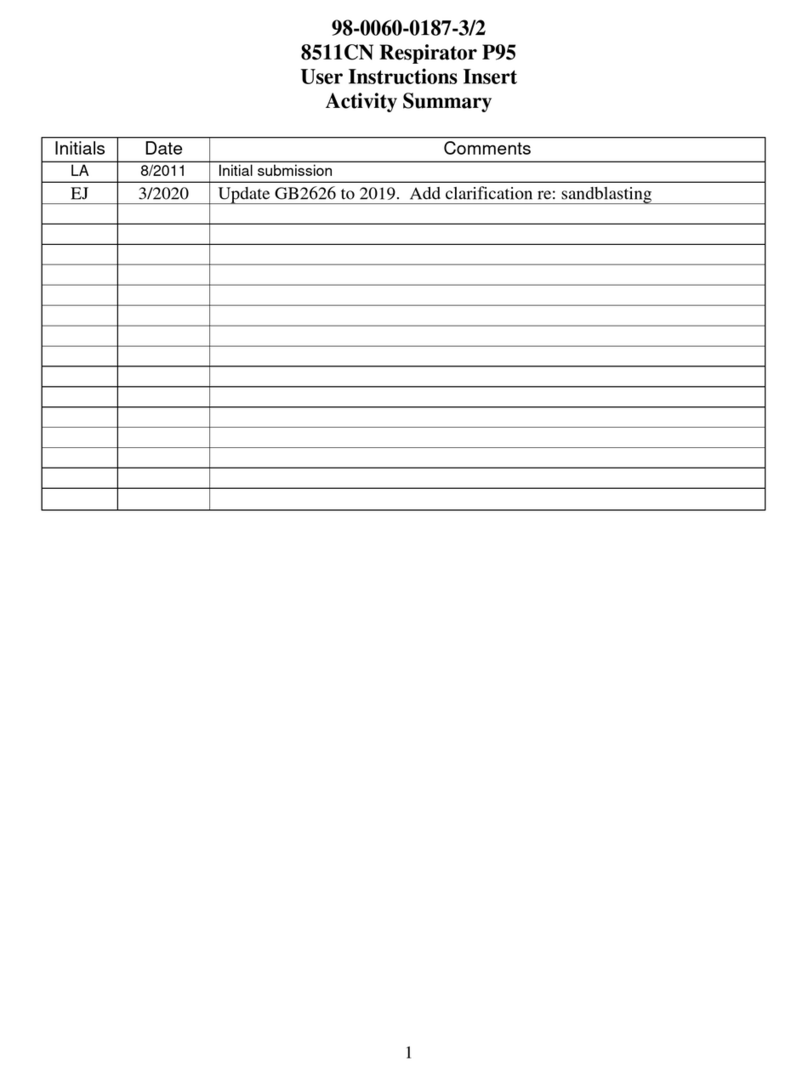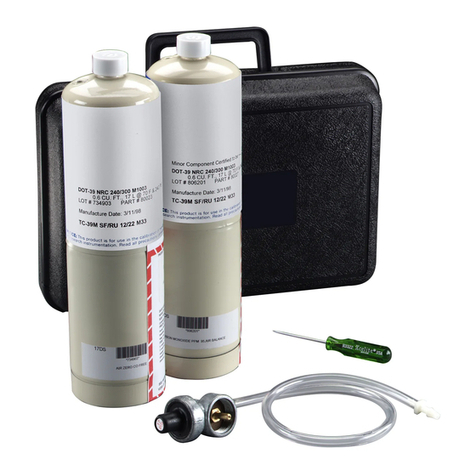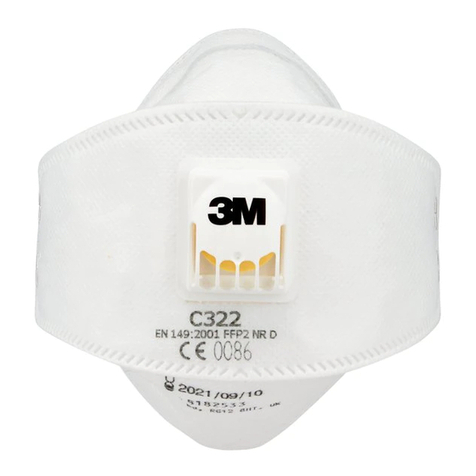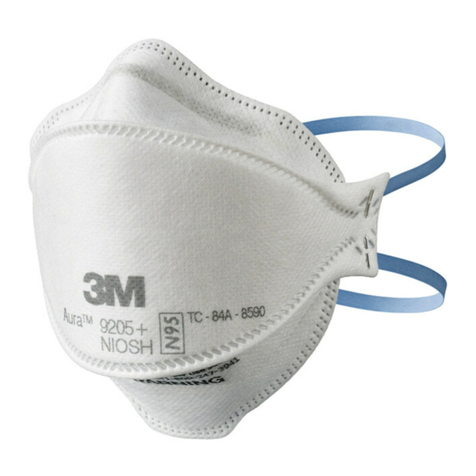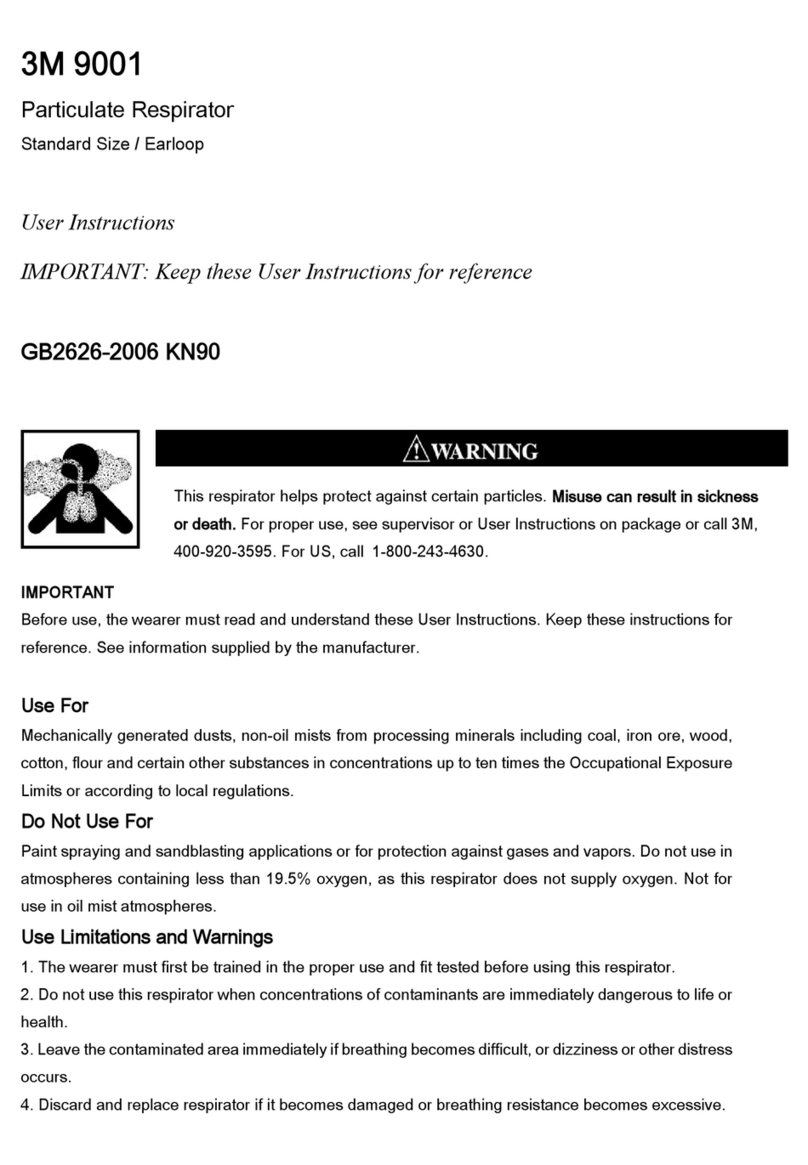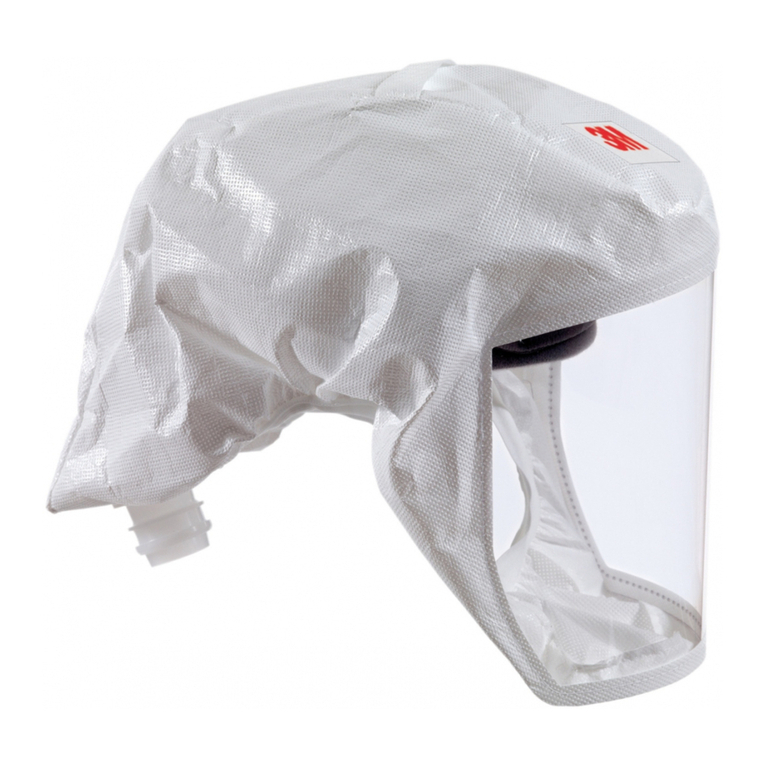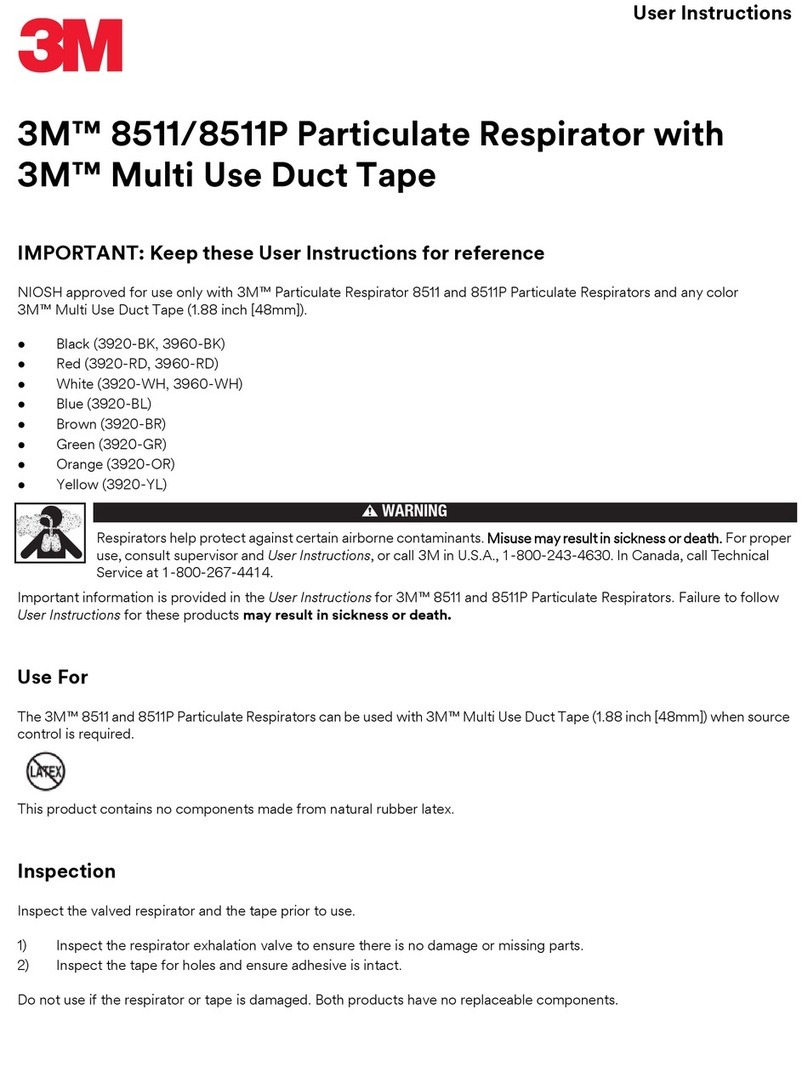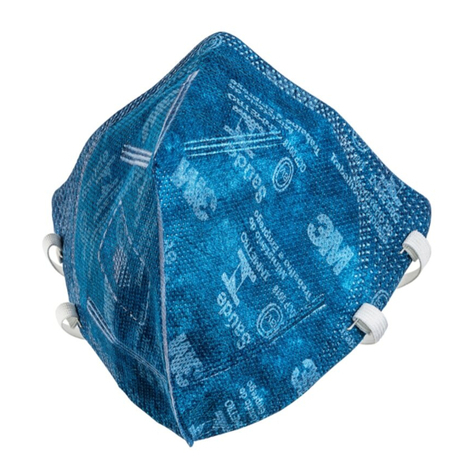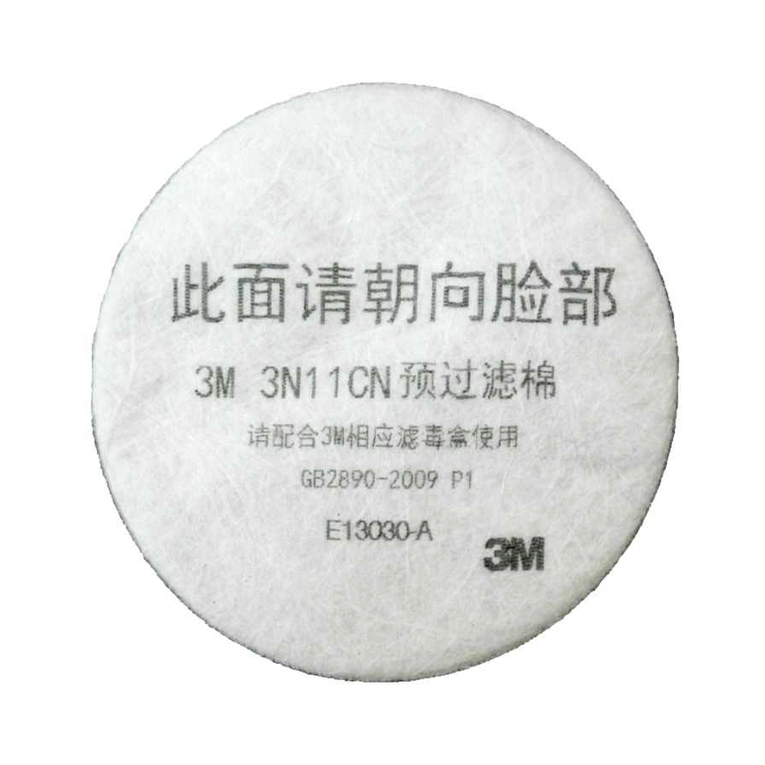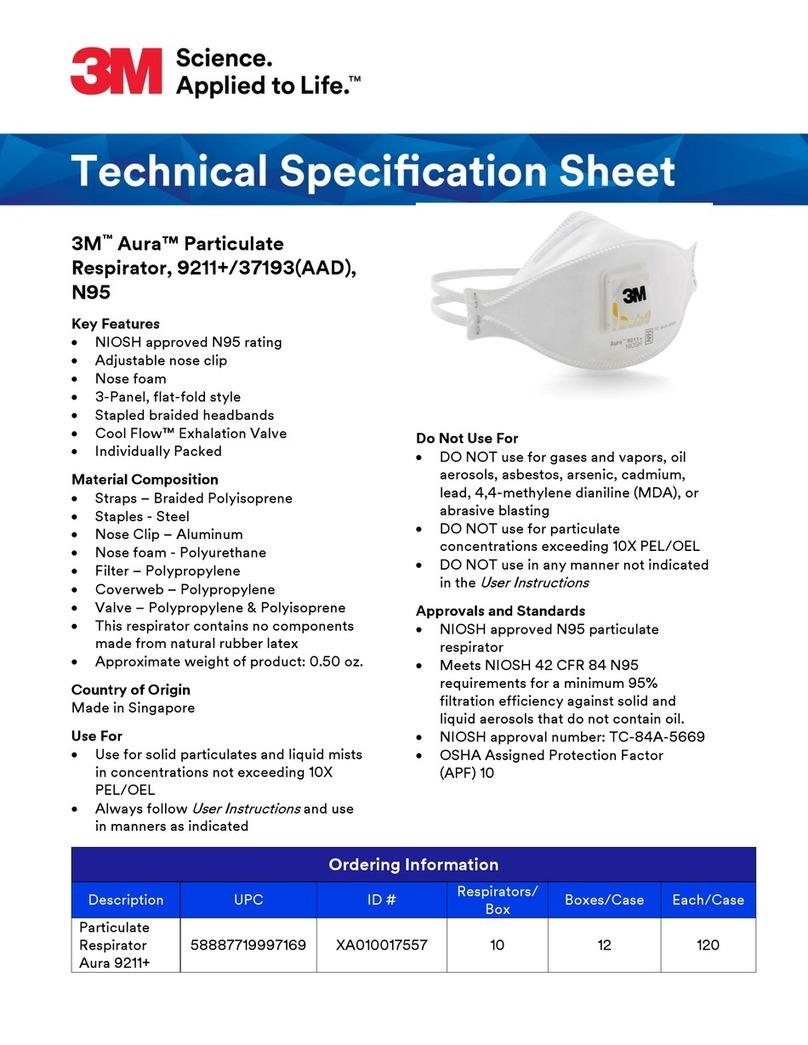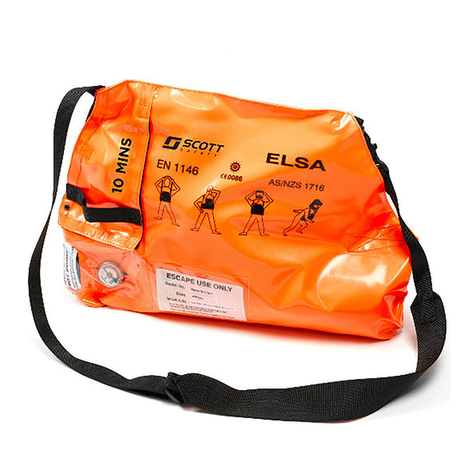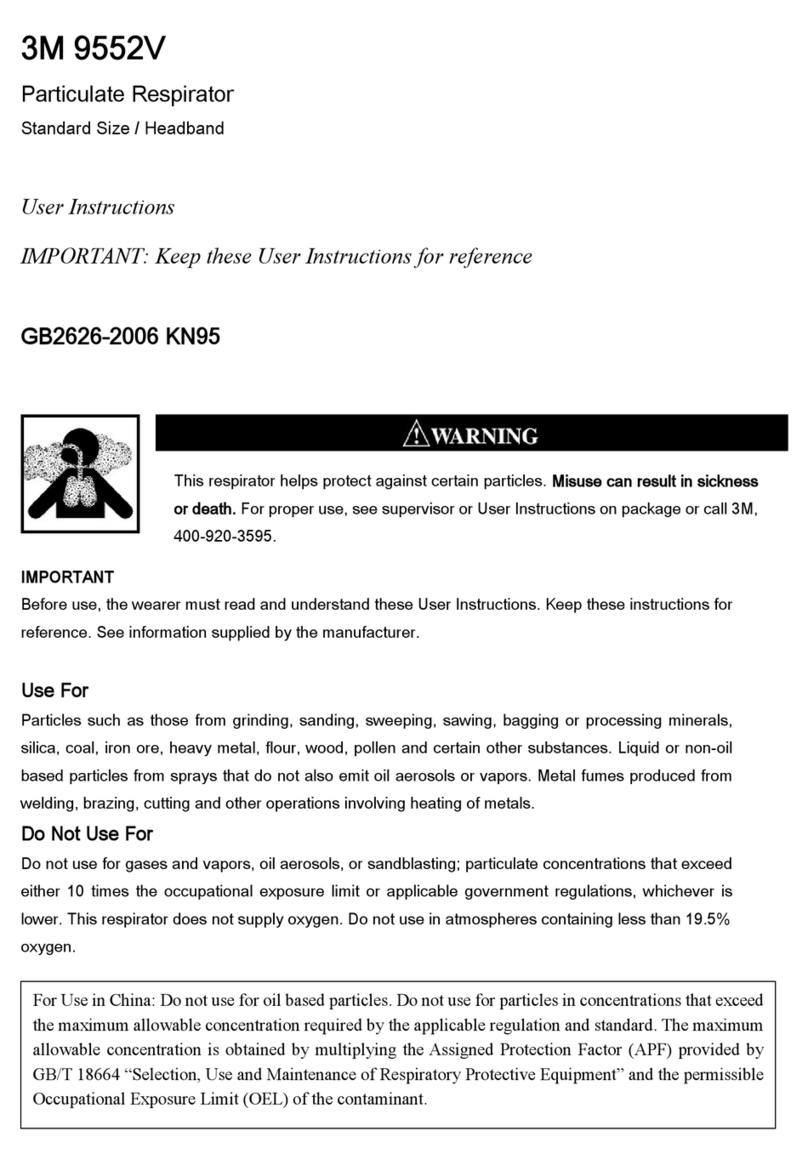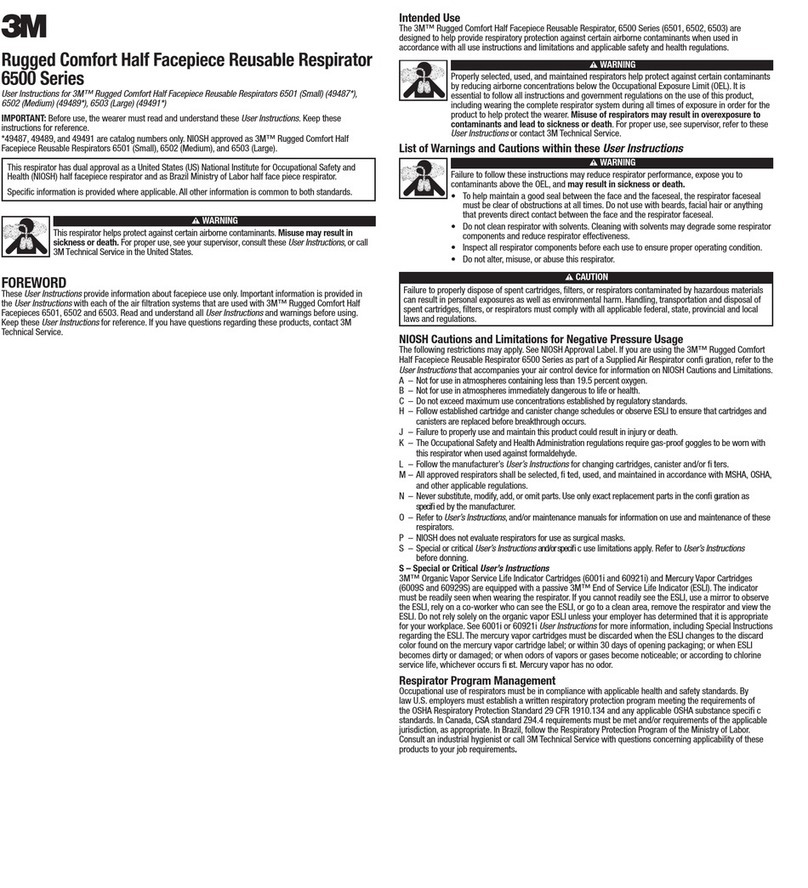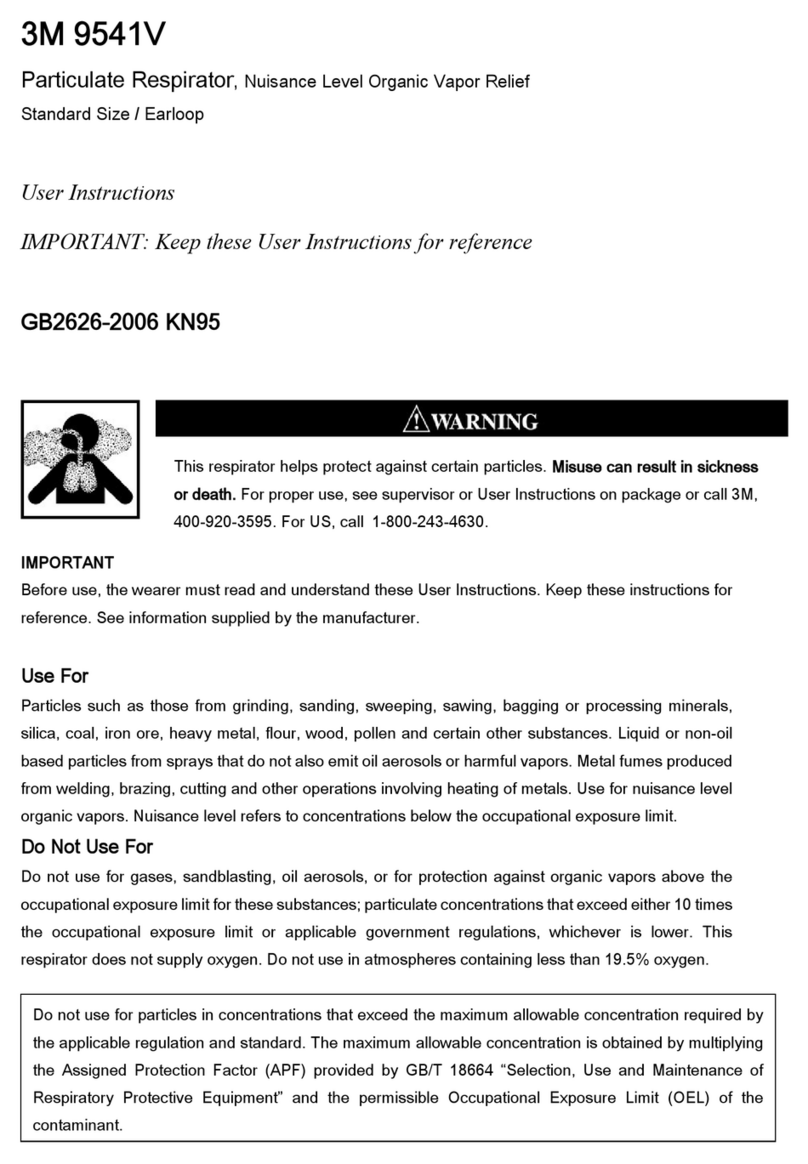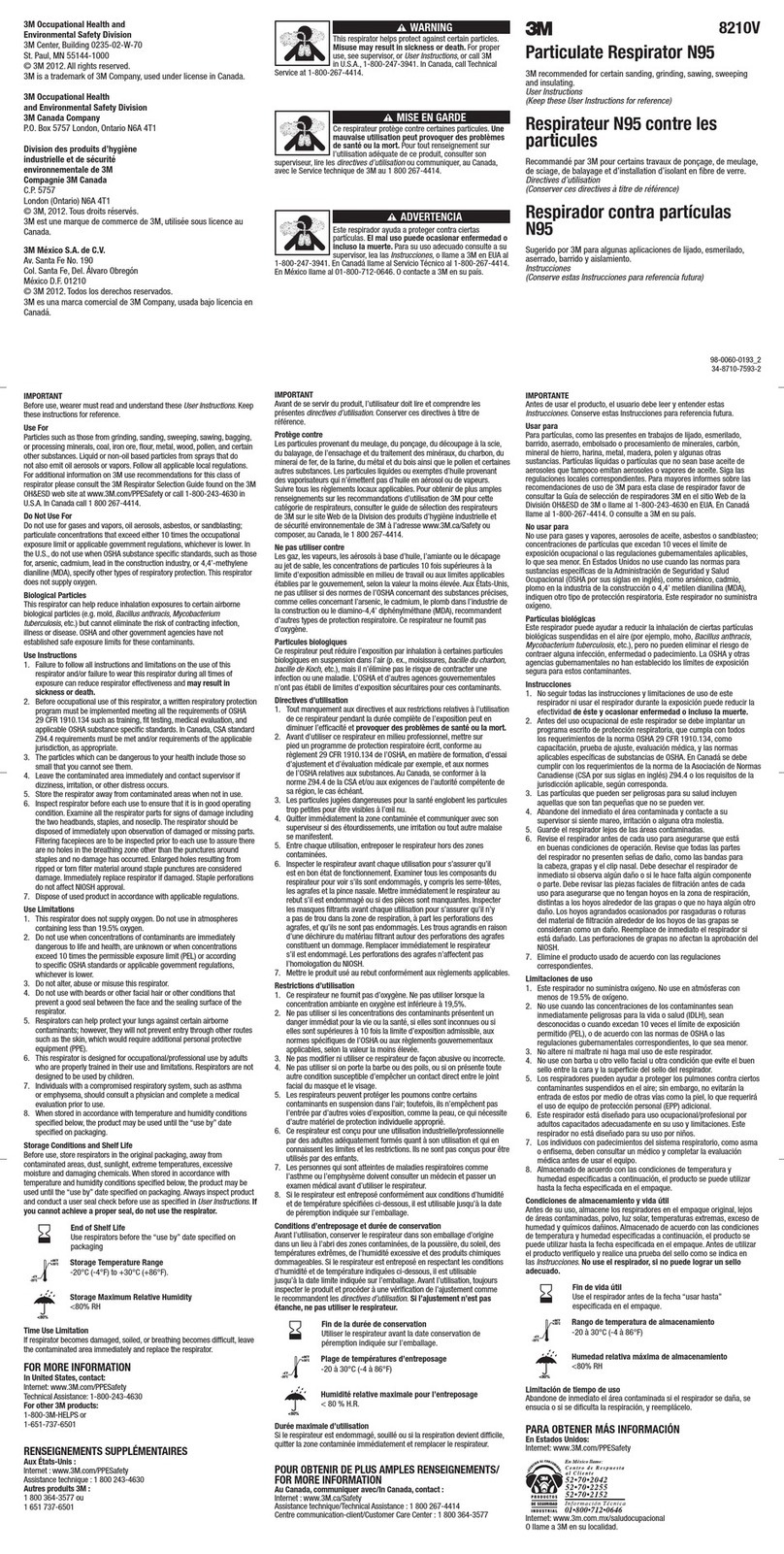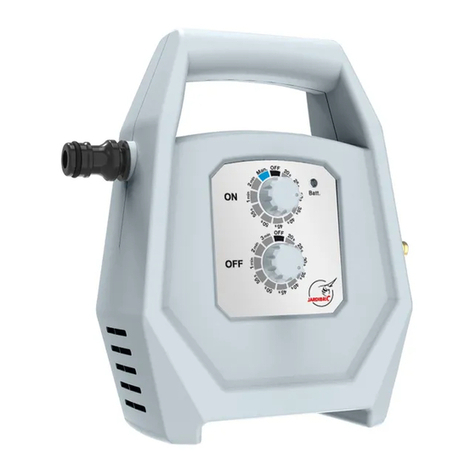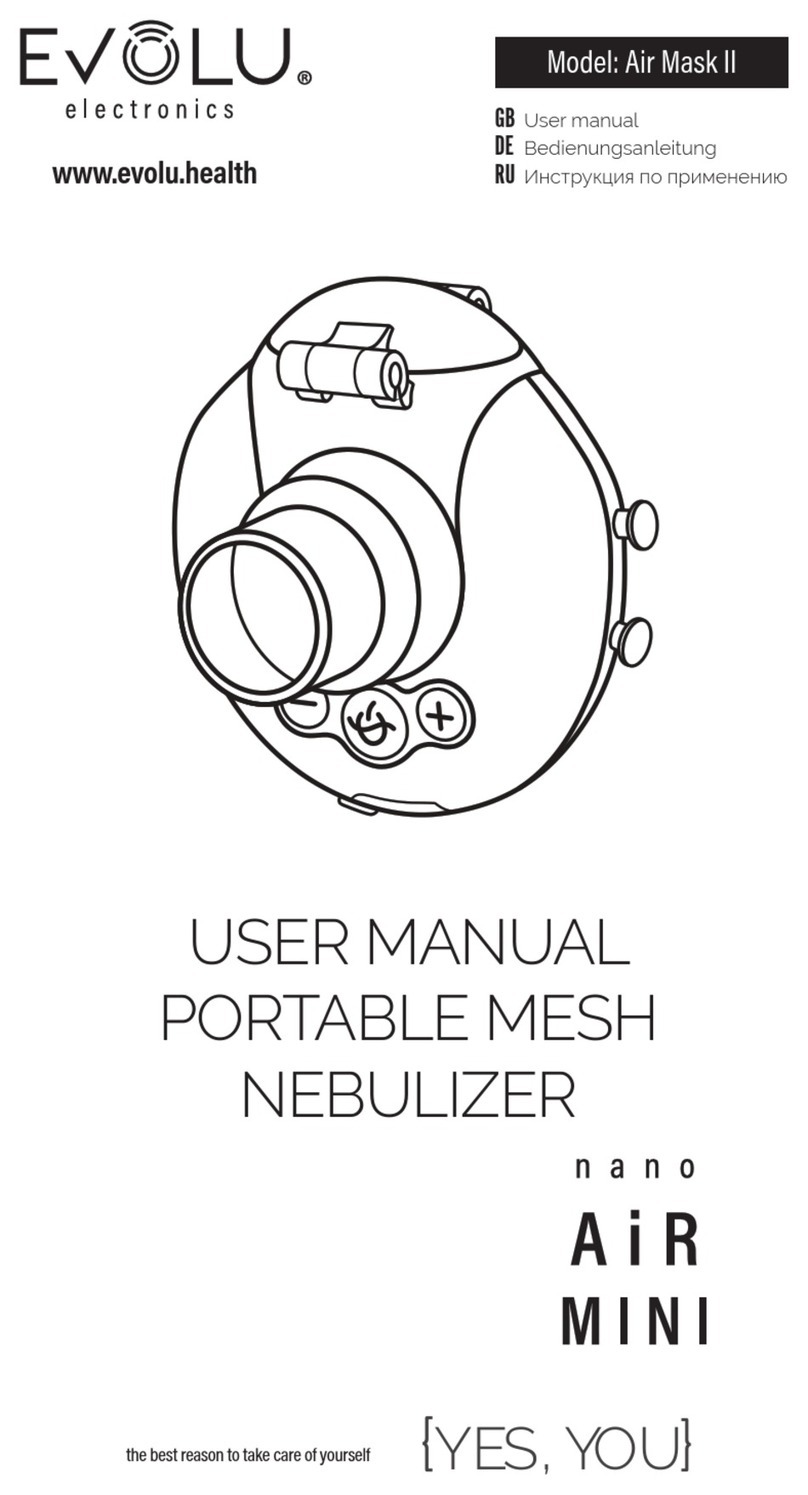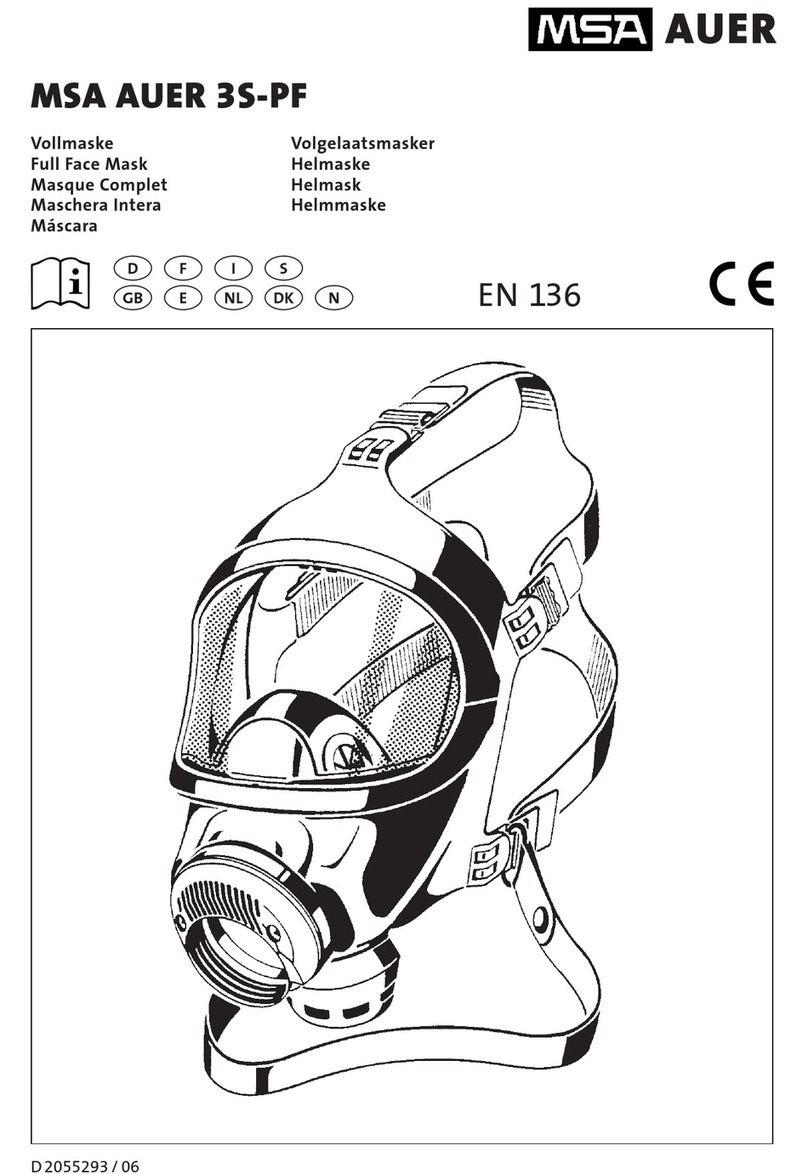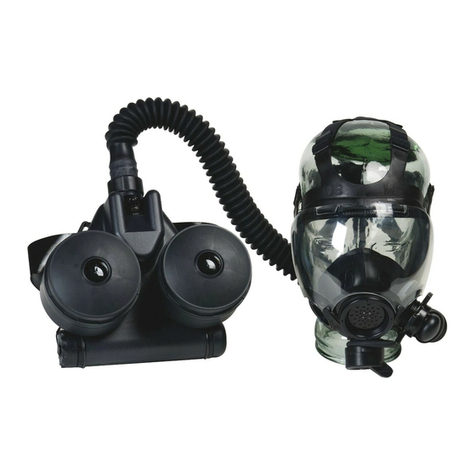
3M is a trademark of 3M. Used under license in Canada. Please recycle. Printed in Canada. © 2020, 3M. All rights reserved. 2009-18167
STARTER TIPS
N95
Flat-fold respirators may not look like traditional cup-style disposable respirators; however,
they help protect you the same way as a cup-style and also have some unique features.
faces — including smaller ones, and moves with your face as you talk.
airborne particles such as dusts and mists, but only if worn correctly.
TIPS FOR WEARING A
RESPIRATOR ON FIRST
Respirators should be put on rst before a hat, eyewear or
hearing protection. The straps should be directly against
your head.
The position of the straps is critical to help create a proper
seal of the respirator to your face. The top strap should be
placed above your ears high on the back of the head, and the
bottom strap should sit below your ears around your neck.
Straps should never be crisscrossed, twisted, or looped
around your ears. Both straps need to be worn for a secure t.
Pinching the nosepiece with one hand can result in a poor t
on the bridge of the nose, potentially allowing contaminated
air to leak in through the gap when you breathe in, and could
cause fogging of eyewear when you breathe out. Instead, use
your ngers from both hands to completely mold the
nosepiece to your face.
There are many dierent types of disposable respirators that
have a variety of features, such as more comfort, easier
breathability, adjustable straps, and dierent sizes. If you do
not nd one very comfortable or you do not get a good seal
with one, try another respirator model.
Facial hair such as a beard can compromise the seal between
your 3M at-fold disposable respirator and your face, which
may reduce its eectiveness. Even stubble can have an eect
on the respirator seal. You must be clean shaven when using
respirators. However, facial hair entirely within the respirator
(e.g., a small goatee or mustache that doesn’t interfere with the
respirator seal) is OK.
Long, dangling hair can also pose problems with strap t at
the back of the head or with the seal to the face. Hair should
be secured in a ponytail or bun between the upper and
lower straps.
s
If your respirator becomes dirty, damaged or dicult to
breathe through, it should be discarded and replaced.
Any N95 respirator that has come into contact with virus
particles should be carefully removed and appropriately
handled after use.
Do not use your respirator past its shelf life, typically 3 to 5
years from date of manufacture*. The expiration date can be
found on packaging. Respirators should be stored according to
the storage instructions, including at temperatures no colder
than -4 degrees F (-20 degrees C), no hotter than 86 degrees
F (30 degrees C), and a relative humidity of less than 80%.
